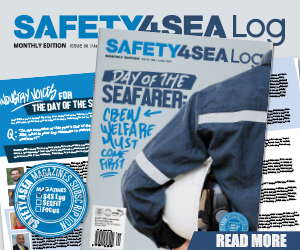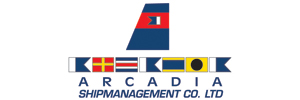The American P&I Club has released the latest instalment of its Good Catch series, in which it explains the dangers of breakaway barges which can cause extensive damage and generate significant losses.
Several barges broke loose and drifted downriver, striking and damaging a moored general cargo vessel and a pier. An inland towing vessel was pushing eight empty barges when the crew temporarily moored the tow so they could retrieve additional barges. The additional barges were located less than 0.5 miles (0.8 km) upriver.
Shortly after making up and securing the additional barges, the crew saw the eight barge tow break away from its mooring.
The Master on the inland towing vessel radioed for assistance. Two nearby towing vessels responded, but neither could reach the drifting barges before they struck the moored general cargo vessel. Then the tow proceeded further downriver and struck a pier before the assisting towing vessels were able to get the tow under control.
The investigation indicated several issues. The number of mooring lines used to secure the eight barges was insufficient for the wind and current. The mooring line used at the forward (upriver) end of the tow was in poor condition and parted. In addition, the mooring line at the aft (downriver) end of the tow was moored to a single bollard that was heavily corroded and could not handle the entire load of the eight barges. That bollard tore loose from the pier.
Actual damage
Two barges in the tow were damaged when they struck the moored vessel and the pier. Damages were $10-12K for each barge. Repairs to the general cargo vessel were approximately $28K, and the vessel’s departure was delayed for four days which added another $16K to the third-party claim. Damage to the pier exceeded $50K due to the extensive concrete repair work needed.
Potential damage
The third-party claims could have been substantially worse. The breakaway barges just missed striking the general cargo ship in the stern area, damaging the rudder and possibly the propeller. The timing was also fortunate because no other marine traffic was transiting in that part of the river when the barges broke loose.
Prevention
- Before mooring the barges, the specific risks for that location and conditions should have been better assessed by the crew, and the mooring arrangement should have been adjusted considering:
- the river current was substantially higher than usual;
- the wind speeds were a steady 22-25 knots with gusts to 35 knots. Furthermore, the wind direction was on the forward quarter of the tow, pushing it away from the dock and downriver; and
- with all eight barges empty, the effect of the wind was significant.
- Although the eight-barge tow was only intended to be moored for a short time, the mooring arrangement should have been as secure as if it were for a longer duration, particularly since the towing vessel crew would not be continuously monitoring it.
- The bollard that looked to be poorly maintained or in questionable condition should not have been used. If the maximum load of the bollard is not known, its use should be re-evaluated.
- The mooring lines that were frayed or worn should not have been used, even if only for a short time.
- If suitable bollards were not available, the Master should have reconsidered using that location to moor the tow.
When you stop an operation before something bad happens… it’s a Good Catch.
When you assess the risks of mooring at each specific location and adjust the mooring accordingly, even if only mooring for a short time… that’s a Good Catch, too!

































































